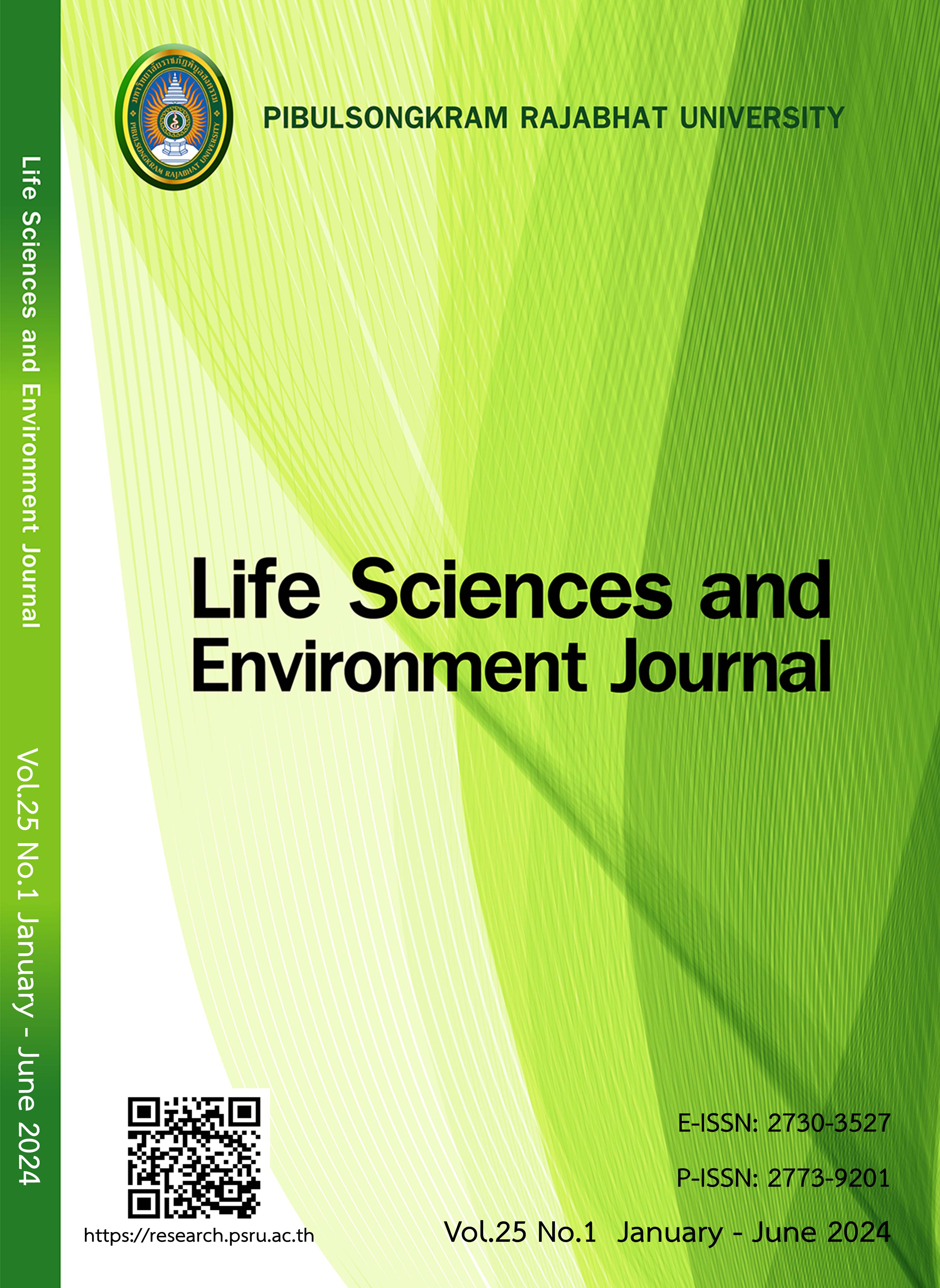COMPARING METHODS FOR THE PRESERVATION OF STREPTOMYCES TM32 TO DEVELOP IT INTO A BIOLOGICAL PRODUCT FOR INHIBITING SOIL-BORNE PLANT PATHOGENS
DOI:
https://doi.org/10.14456/lsej.2024.18Keywords:
biological products, biological control of plant diseases, plant pathogenic fungi, streptomycesAbstract
Prevention and control of pests by biological products is one option that can reduce or replace the use of agricultural chemicals to produce safe products. Streptomyces TM32 can inhibit various types of plant pathogenic fungi and produce substances that promote plant growth. Therefore, this research aims to develop a biological product formula to inhibit the fungal growth that causes disease on plant roots from Streptomyces TM32 by comparing the methods of preserving them for development into four biological product formulas (1. Cooked rice, 2. wheat flour and Dolomite (6:3), 3. Talcum and CMC (2:1) and 4. Rice flour, Palm oil and Sucrose (87:3:10) volume-by-volume ratio). The survival of biological products was tested in each formula under temperature storage conditions at 10 and 35oC for 14, 28, and 42 days with the spread plate technique. The results found that formula 1 (Cooked rice), when stored at 35oC for 14 days, had the highest amount of germs remaining, equal to 6.71 ± 0.08 log CFU/g. Therefore, formula 1 was used to test the effectiveness of biological products in inhibiting fungal growth in plants. The experimental set was divided into four sets: unsterilized soil with no added biological agents (Experimental set 1) and with biological products (Experimental set 2); sterilized soil without added biological agents (Experimental set 3) and with biological products added (Experimental set 4). The experiment was performed in a relative humidity condition of 70%, temperature of 25oC and watering every 2 days for 35 days to compare germination percentages and to
compare average height of plant (chili plant). The results showed that the second experimental set had the highest germination rate (80%). However, the average height of chili plants after 35 days in this experimental set was lower than that of the control set that had not been inoculated (Experimental sets 1 and 3).
References
Al-Dhabi NA, Esmail GA, Ghilan AKM, Arasu MV. Isolation and screening of Streptomyces sp. from the environment of Saudi Arabia with concomitant production of lipase and protease in submerged fermentation. Saudi Journal of Biological Sciences 2020;27(1):474–479.
Bonaterra A, Badosa E, Daranas N, Francés J, Roselló G, Montesinos E. Bacteria as biological control agents of plant diseases. Microorganisms 2022;10:1759. doi: 10.3390/microorganisms10091759.
Dagher F, Olishevska S, Philion V, Zheng J, Déziel E. Development of a novel biological control agent targeting the phytopathogen Erwinia amylovora. Heliyon 2020;6(10):e05222. doi:10.1016/j. heliyon. 2020.e05222.
Garvey M. Bacteriophages and food production: biocontrol and bio-preservation options for food safety. Antibiotics 2022;11:1324. doi: 10.3390/antibiotics11101324.
Hu R, Yu C, Jin Y, Pray C, Deng H. Impact of government policies on research and development (R&D) investment, innovation, and productivity: Evidence from pesticide firms in China. Agriculture 2022;12(5):709. doi: 10.3390/agriculture12050709.
Lernoud J, Willer H. Current statistics on organic agriculture worldwide: area, operators, and market. In Willer H, Lernoud J. (Eds.), The world of organic agriculture. statistics and emerging trends. FiBL & IFOAM – Organics International. Rheinbreitbach: Medienhaus Plump; 2017:36-74.
Nakaew N, Lumyong S, Sloan TW, Sungthong R. Bioactivities and genome insights of a thermotolerant antibiotics-producing Streptomyces sp. TM32 reveal its potentials for novel drug discovery. MicrobiologyOpen 2019;8:1-7.
Nakaew N, Rangjaroen C, Sungthong R. Utilization of rhizospheric Streptomyces for biological control of Rigidoporus sp. causing white root disease in rubber tree. European Journal of Plant Pathology 2015;142:93-105.
Tamreihao K, Ningthoujam DS, Nimaichand S, Singh ES, Reena P, Singh SH, Nongthomba U. Biocontrol and plant growth promoting activities of a Streptomyces corchorusii strain UCR3-16 and preparation of powder formulation for application as biofertilizer agents for rice plant. Microbiological Research 2016;192:260-270.
Teixidó, N, Usall, J, Torres, R. Insight into a successful development of biocontrol agents: production, formulation, packaging, and shelf life as key aspects. Horticulturae 2022;8(4):305. doi: 10.3390/ horticulturae8040305.
Downloads
Published
How to Cite
Issue
Section
License
Copyright (c) 2024 Life Sciences and Environment Journal

This work is licensed under a Creative Commons Attribution-NonCommercial-NoDerivatives 4.0 International License.
Each article is copyrighted © by its author(s) and is published under license from the author(s).










